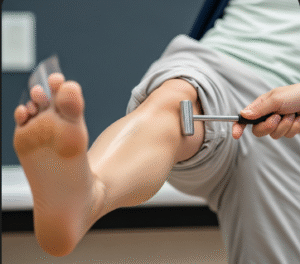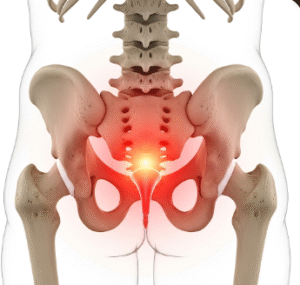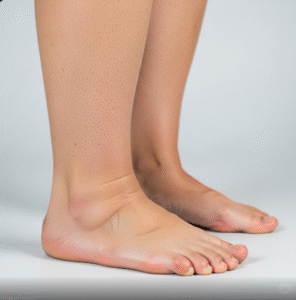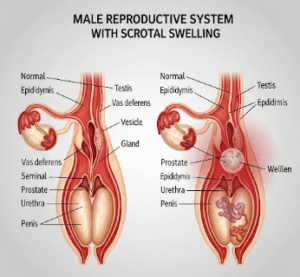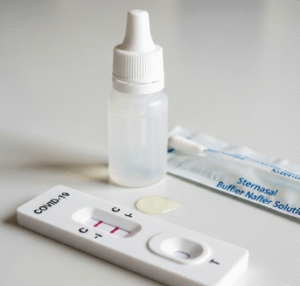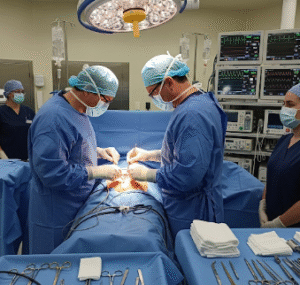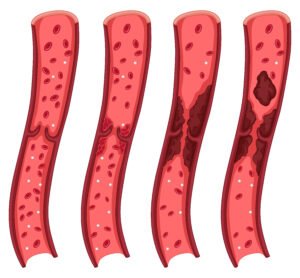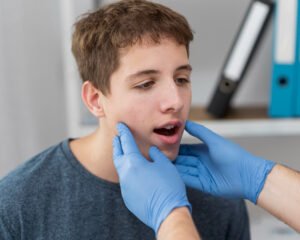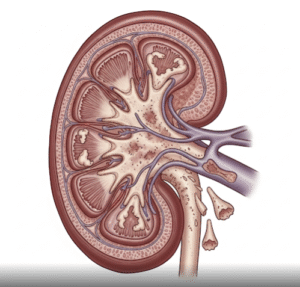Overview
Deafness refers to partial or complete loss of hearing, which can affect one or both ears. It can be congenital (present at birth) or acquired later in life due to injury, illness, or age-related changes. Deafness can impact communication, learning, social interaction, and overall quality of life. In Korea, audiology clinics and ENT centers provide advanced diagnostics, hearing aids, cochlear implants, and rehabilitation services for individuals with hearing loss.
Highlights:
➤ Sensory impairment – Partial or complete loss of hearing
➤ Acute or chronic – Can develop suddenly or gradually over time
➤ Impact on communication – Affects speech, language development, and social interaction
Key Facts
➤ Prevalence: Millions worldwide experience some degree of hearing loss, with higher prevalence in older adults and newborns with congenital conditions.
➤ Age affected: Can occur at any age; age-related hearing loss (presbycusis) is common in adults over 60.
➤ Gender: Both males and females are affected equally.
➤ Impact: Untreated deafness can lead to social isolation, learning difficulties, depression, and reduced safety awareness.
What is Deafness?
Deafness is defined as a reduction or complete inability to hear sounds, which can result from damage to the outer, middle, or inner ear, auditory nerve, or brain centers responsible for hearing. It can be classified as:
- Conductive hearing loss: Problems in the outer or middle ear that prevent sound from reaching the inner ear
- Sensorineural hearing loss: Damage to the inner ear or auditory nerve, often permanent
- Mixed hearing loss: Combination of conductive and sensorineural factors
Highlights:
➤ Partial or complete hearing loss – Severity can range from mild to profound
➤ Unilateral or bilateral – One ear or both ears may be affected
➤ Progressive or sudden onset – Can develop gradually or appear suddenly due to trauma or illness
What Symptoms Are Related to Deafness?
➤ Difficulty understanding speech – Especially in noisy environments
➤ Turning up the volume excessively – On TVs, phones, or music devices
➤ Ringing in the ears (tinnitus) – Often associated with sensorineural hearing loss
➤ Muffled or distorted hearing – Sounds may seem unclear or faint
➤ Difficulty localizing sound – Trouble identifying the direction of sounds
➤ Delayed speech in children – Congenital deafness affects language development
➤ Withdrawal from social interactions – Due to difficulty communicating
What Causes / Possible Causes
➤ Genetic or congenital factors: Hereditary hearing loss or birth defects
➤ Aging (presbycusis): Natural degeneration of inner ear structures
➤ Noise exposure: Chronic loud noise can damage hair cells in the inner ear
➤ Infections: Ear infections, meningitis, mumps, or rubella
➤ Ototoxic medications: Certain antibiotics, chemotherapy drugs, or diuretics
➤ Trauma: Head injury or sudden acoustic trauma
➤ Circulatory or metabolic disorders: Poor blood flow or diabetes affecting the cochlea
Highlights:
➣ Deafness may result from structural, neurological, or environmental factors
➣ Early identification and intervention are critical to prevent permanent damage
When Should I See My Doctor?
➤ Sudden hearing loss – Requires urgent evaluation
➤ Persistent difficulty hearing – Even mild impairment warrants assessment
➤ Tinnitus or ear pain – Accompanied by hearing changes
➤ Balance problems or vertigo – May indicate inner ear involvement
➤ Delayed speech or poor language development in children
Highlights:
➣ Audiologists and ENT specialists in Korea provide hearing tests, imaging, and diagnostic assessments
➣ Early intervention can significantly improve outcomes for both children and adults
Care and Treatment
➤ Hearing aids: Amplify sound for individuals with conductive or sensorineural hearing loss
➤ Cochlear implants: For severe or profound sensorineural hearing loss
➤ Medications or surgery: Treat underlying infections, structural issues, or earwax blockages
➤ Auditory rehabilitation: Training to improve listening skills and speech comprehension
➤ Sign language or communication strategies: For severe or complete deafness
➤ Lifestyle modifications: Protect ears from loud noise and avoid ototoxic medications
Highlights:
➣ Treatment depends on type and severity of hearing loss
➣ Early rehabilitation improves communication, social interaction, and overall quality of life
Treatment Options in Korea
Medical Treatments:
➤ ENT and audiology clinics: Comprehensive evaluation using audiometry, tympanometry, and imaging
➤ Pharmacological therapy: For infections or sudden sensorineural hearing loss
➤ Surgical interventions: Tympanoplasty, ossicle reconstruction, or cochlear implantation
Advanced Procedures:
➤ Cochlear implants: High-tech solution for severe or profound hearing loss
➤ Bone-anchored hearing systems: For conductive or mixed hearing loss
➤ Auditory brainstem implants: For patients unable to benefit from cochlear implants
Rehabilitation & Follow-Up Care:
➤ Ongoing auditory therapy and speech-language training
➤ Regular monitoring to adjust hearing devices for optimal performance
➤ Holistic care in Korea integrates ENT, audiology, rehabilitation, and counseling
Highlights:
➣ Korean clinics provide state-of-the-art hearing devices and multidisciplinary rehabilitation programs
➣ Early intervention ensures maximum recovery and social integration


